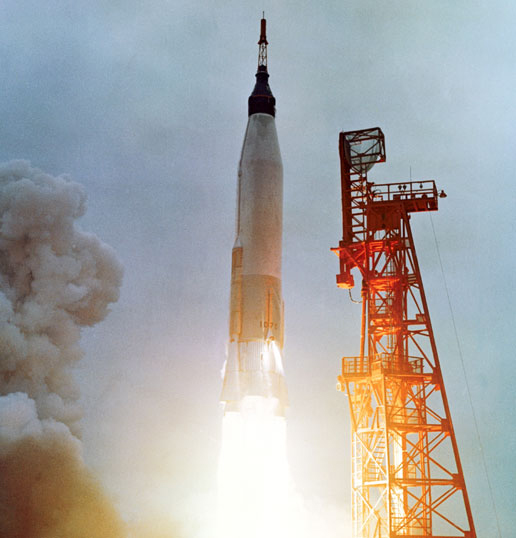
No earlier than 3:09 p.m. EDT on Saturday, 25 May, NASA astronauts Barry “Butch” Wilmore and Suni Williams will head for orbit atop a United Launch Alliance (ULA) Atlas V from Cape Canaveral Space Force Station’s storied Space Launch Complex (SLC)-41 for the long-awaited Crew Flight Test (CFT) of Boeing’s CST-100 Starliner spacecraft. The two retired Navy captains will spend at least eight “docked” days aboard the International Space Station (ISS) conducting a range of flight test objectives before returning to a parachute-and-airbag-aided landing in the southwestern United States.
In doing so, Wilmore and Williams will become the fifth and sixth humans in history to ride a “Mighty Atlas” and the first to do so in more than six decades. And as outlined in AmericaSpace’s stories on Thursday and yesterday, their achievement will stand upon the shoulders of “Original Seven” Project Mercury astronauts John Glenn, Scott Carpenter, Wally Schirra and Gordon Cooper.
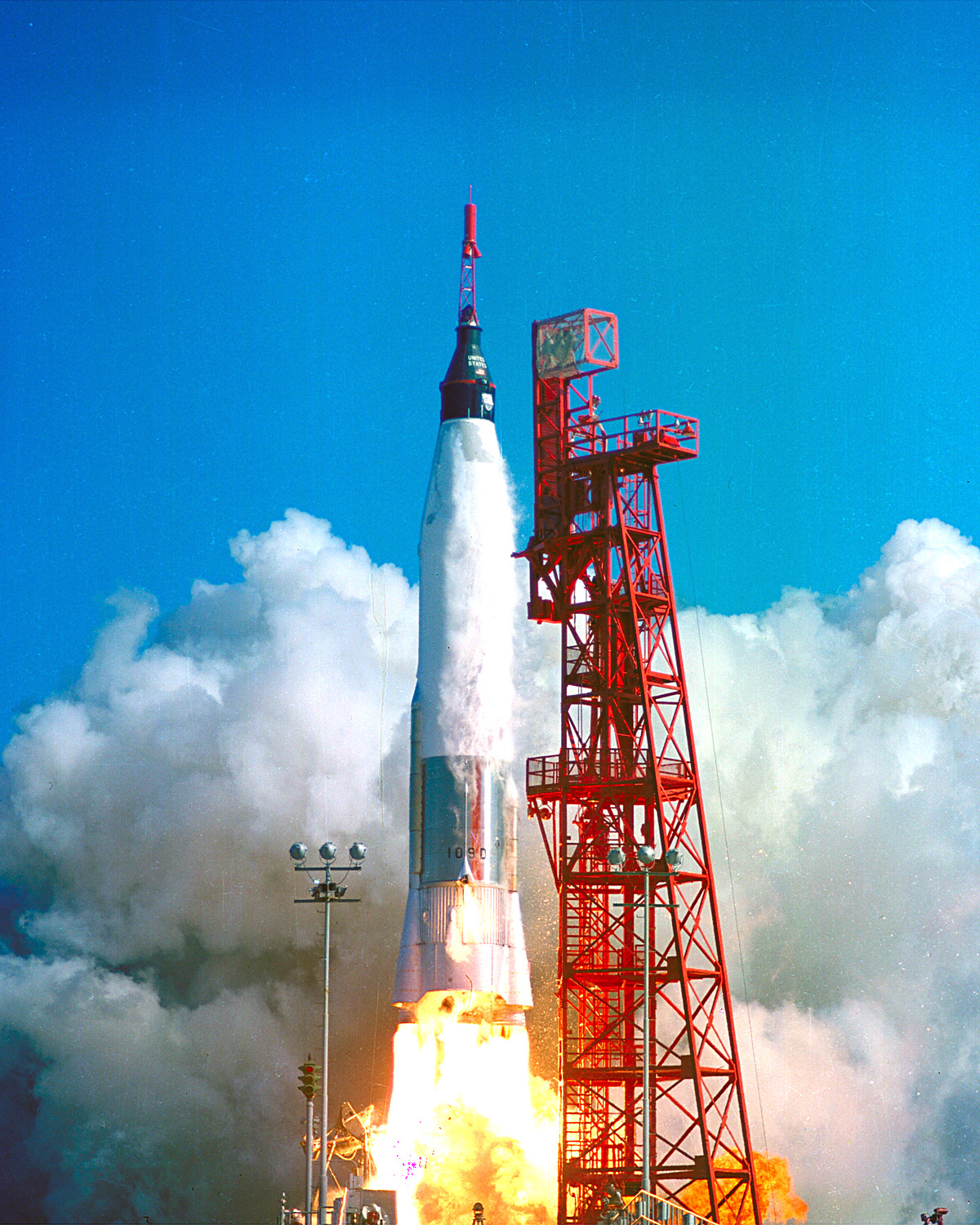

Following Glenn’s Friendship 7 mission in February 1962—during which he became the first American citizen to orbit Earth and the first person to fly an Atlas—the world’s attention turned, albeit briefly, to fellow astronaut Deke Slayton, tasked with flying the following April aboard a Mercury capsule he had nicknamed “Delta 7”. But despite delta being, in Slayton’s words, “a nice engineering term that described the change in velocity”, his own velocity in getting to orbit atop his own Atlas came very quickly to nought.
A minor yet persistent heart condition grounded Slayton from his mission in mid-March. “NASA knew it would have to publicly disclose my heart condition prior to my flight,” Slayton wrote in his autobiography, Deke. “There would be medical monitors at tracking stations all over the world who wouldn’t know how to react otherwise…NASA would be opening itself up to a lot of medical second-guessing.”
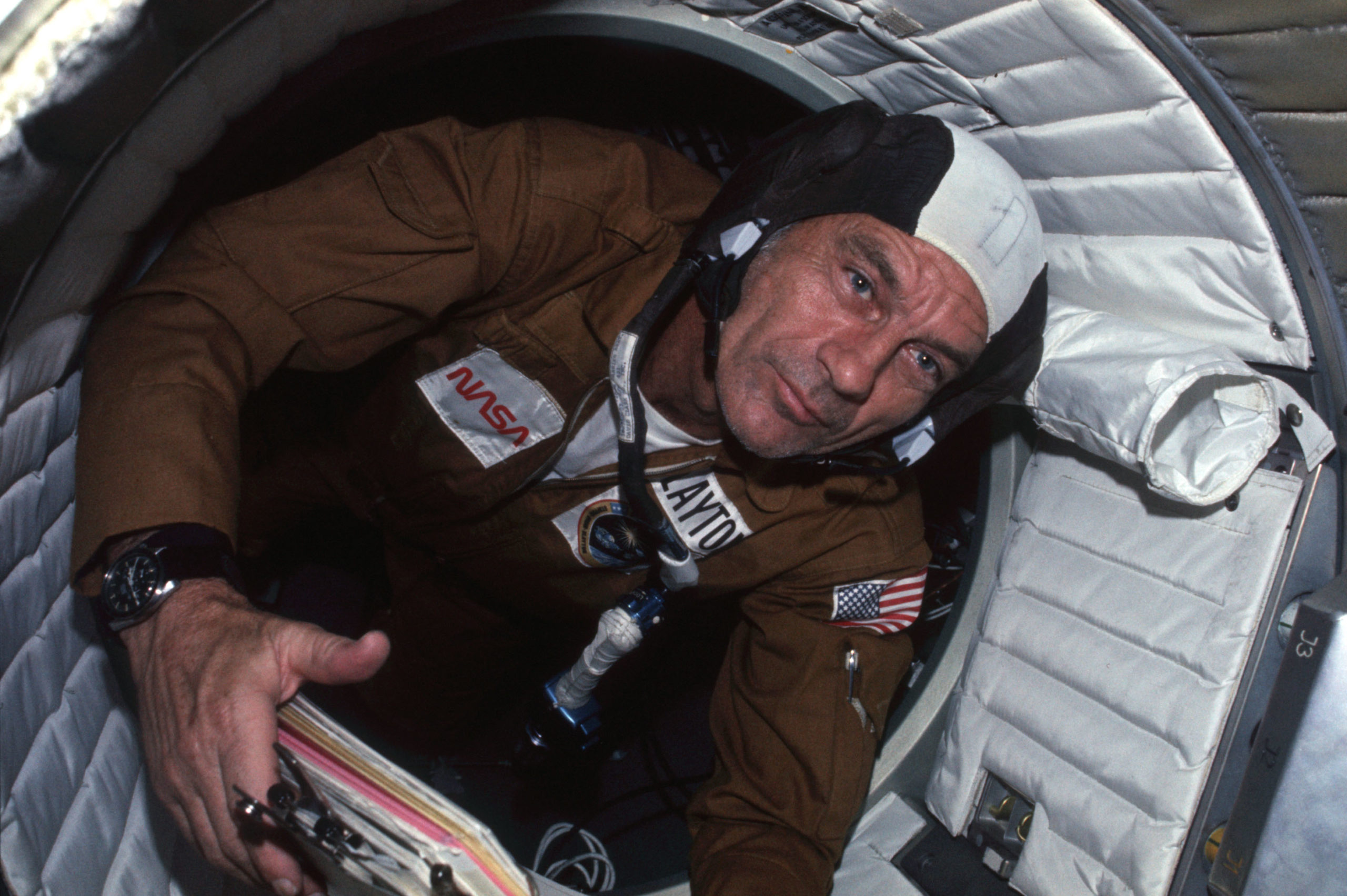

Slayton’s 94.3-foot-tall (28.7-meter) Atlas-D booster might also have exacerbated the problem. If the rocket failed and the mission suffered an abort during ascent, the astronaut might be subjected to gravitational loads as high as 21 G. That that conjured the harrowing possibility that Slayton—dehydrated and perhaps fibrillating—could die during his descent back to Earth.
And the result in these heady days of the Cold War, with President John F. Kennedy having the previous year committed America to land a man on the Moon before the decade’s end, could be defeat to the Soviet Union.
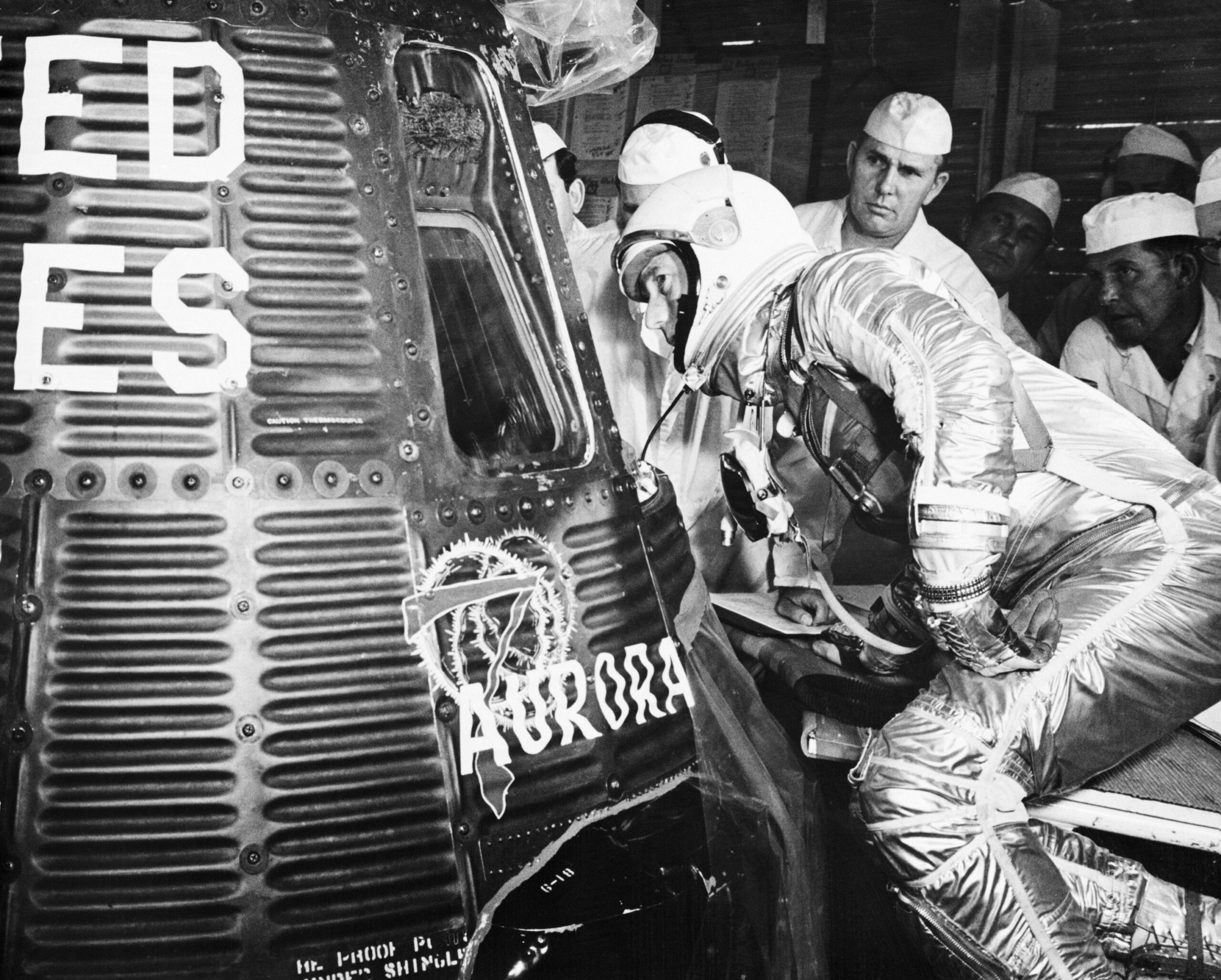

Slayton was grounded in favor of fellow astronaut Scott Carpenter, who named his Mercury capsule “Aurora 7”. But the Atlas fleet induced its own problems: on 9 April 1962, an Atlas-F missile exploded one second after liftoff from Cape Canaveral’s Launch Complex 11, subsequent investigation revealing some sort of turbopump explosion.
The rocket’s sustainer engine shut down almost immediately after liftoff, followed by an abrupt loss of all telemetered data, and the twin booster engines were destroyed in the resultant conflagration at T+3 seconds. Fortunately, the different engine start-up protocols followed by the military Atlas-F and Project Mercury’s Atlas-D eliminated lingering doubts over the rocket’s reliability, but concerns remained.
Hopes to get Aurora 7 airborne on 19 May came to nothing when irregularities were found in a temperature control device on the Atlas-D’s flight control system heater. Five days later, Carpenter was strapped inside his spacecraft and sixteen seconds past 7:45 a.m. EST the rocket came alive, pummeling the ground at the Cape’s Launch Complex 14 with 360,000 pounds (163,000 kilograms) of thrust.
Watching from the Cape were Carpenter’s wife, Rene, and their four children, who promptly abandoned the television and ran outside to watch their husband and father become America’s fourth man in space. Aboard Aurora 7, the astronaut himself remembered “surprisingly little vibration” from the Atlas-D, “although the engines made a big racket” and the swaying of the rocket during the early part of ascent was noticeable.
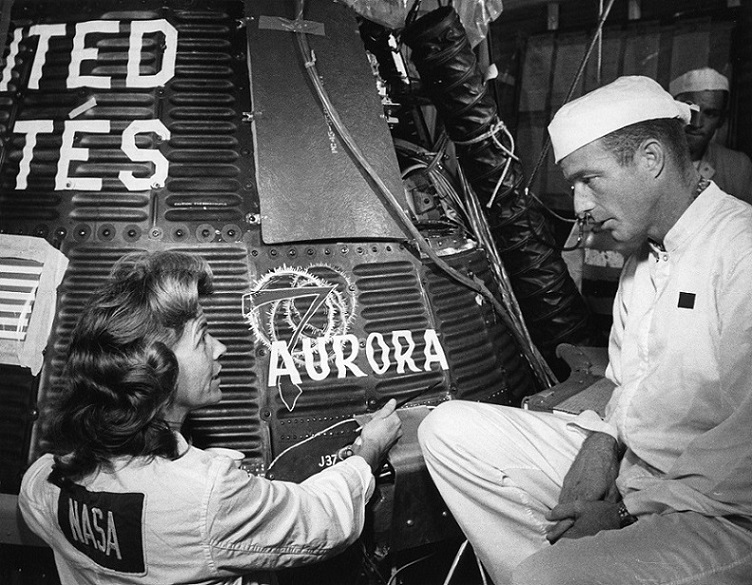

In his autobiography, For Spacious Skies, Carpenter expressed amazement that after years of flying aircraft and leveling-out after an initial climb, Aurora 7’s altimeter kept climbing and climbing and climbing as the rocket shot straight up. After reaching space, he watched dumbstruck as the Atlas-D’s sustainer engine separated and tumbled away into the distance, trailing a stream of ice crystals two or three times longer than the rocket itself.
Two Americans so far had ridden Atlases into space, but the third—Wally Schirra—would fly a booster which gave nothing but trouble during its fabrication and testing. Originally set for delivery to Cape Canaveral in July 1962, to launch Schirra’s mission as early as September, it failed a composite test and was overshadowed by a multitude of turbopump-related failures pertaining to military Atlas-F missiles.
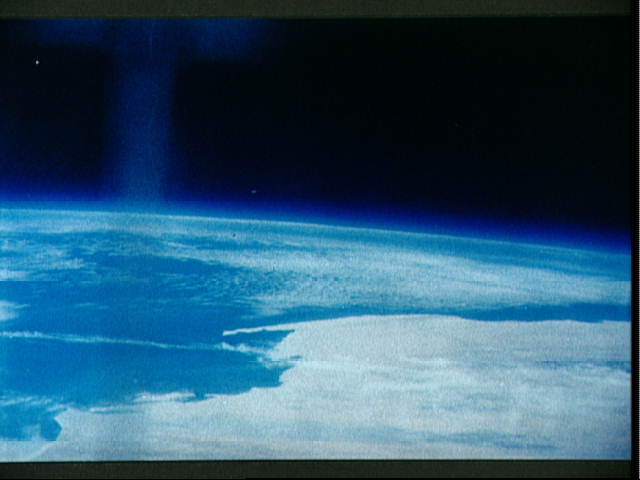

In May, a missile had exploded on the test stand due to a turbopump malfunction and a ruptured liquid oxygen feed-line. Then on 10 August, an Atlas-F lifted off from Vandenberg Air Force Base, Calif., but failed to execute its roll maneuver and it was remotely destroyed by the range safety officer at T+67 seconds. Two more Atlas-Fs flew successfully in August and September, although a lack of turbopump lubricant would go on to claim another missile and Schirra can have been in little doubt that the rocket atop which he would soon ride was a dangerous, temperamental beast.
The spate of Atlas-F malfunctions led NASA to put the Atlas-D for Schirra’s mission through a static test firing, which pushed the launch firstly to 24 September 1962 and later to early October, following the detection of a fuel leak in a seam weld. Yet Schirra’s rocket was arguably the safest so far, its engines benefiting from hypergolic fluids (rather than pyrotechnics) which eliminated the two-second period of “hold-down” after ignition and correspondingly helped save fuel and promote smoother combustion.
Schirra named his Mercury capsule “Sigma 7” to denote the engineering emphasis of his nine-hour, six-orbit mission. With no pre-launch problems with the Atlas-D, the flight got underway at 7:15 a.m. EST on 3 October and—disappointingly for an astronaut test pilot—proceeded with near-perfection.
In spite of what Schirra called a “disappointingly short” ascent, and a completely nominal climb to space, Sigma 7’s rise to orbit was not entirely without issue. Ten seconds after liftoff, the Atlas-D’s clockwise roll-rate proved somewhat greater than planned, its sensors registering a “rifling” roll only 20 percent shy of a mandatory abort.
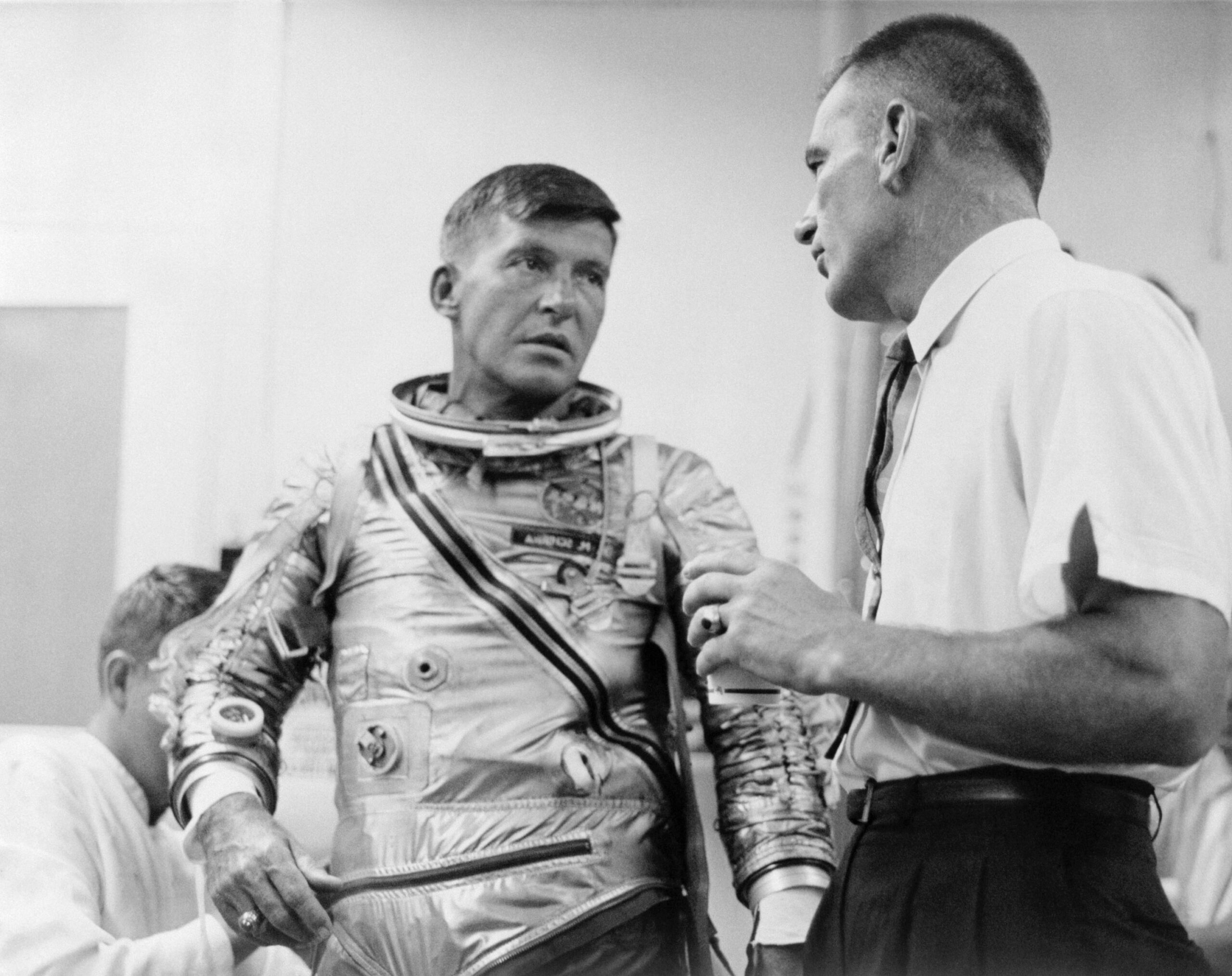

“My course was being plotted against an overlay grid called a “harp”, since it’s shaped like a musical instrument,” Schirra wrote in his memoir, Schirra’s Space. “Green lines in the middle of the grids designate the “safe” zone and on the outer limits the lines go from yellow to red. I was headed into the yellow area. If I had reached the red, there was a likelihood that the Atlas would impact on land, possibly in a populated area.”
Had that dire eventuality occurred, the range safety officer would have few other options but to terminate the mission, sending Sigma 7 to a parachute-aided splashdown in the Atlantic Ocean and destroying the Atlas-D at altitude.
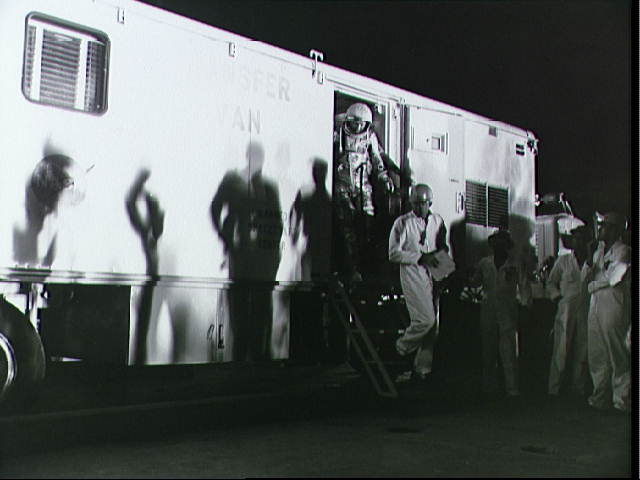

The final voyage of Project Mercury, and the most recent successful launch of humans aboard a Mighty Atlas, came with Faith 7 and the day-long, 22-orbit mission of astronaut Gordon Cooper. But with the spate of military Atlas-F failures (another had catastrophically malfunctioned in November 1962), all eyes were tightly focused on Cooper’s Atlas-D when it emerged from the factory early the following year.
And the first signs did not look promising. The booster failed to pass its initial inspection and was returned to the factory for rewiring of its flight control system. That forced NASA to postpone Cooper’s launch from mid-April until the middle of May 1963.
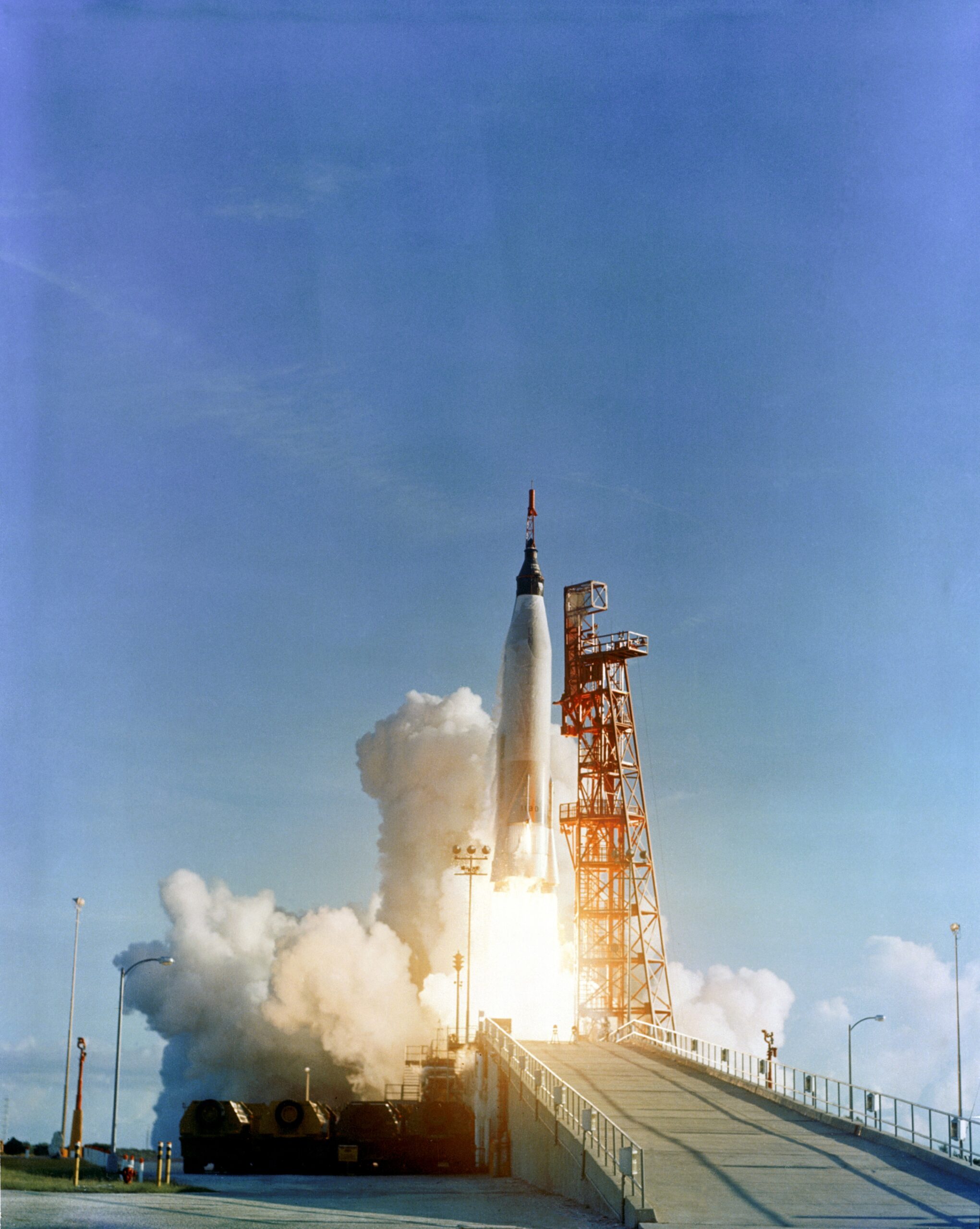

Finally, in March the Atlas-D passed its inspections without even a minor discrepancy. Engineers had defined an “offset” of the engines to counteract the excessive roll-rate experienced by Schirra and Cooper’s rocket was confidently touted as “the best bird to date” in the Atlas-D fleet.
Delayed from 14 May due to a radar malfunction at a tracking site in Bermuda and a failed diesel engine needed to retract Launch Complex 14’s gantry away from the Atlas-D, Cooper finally launched at 8 a.m. EST on the 15th.
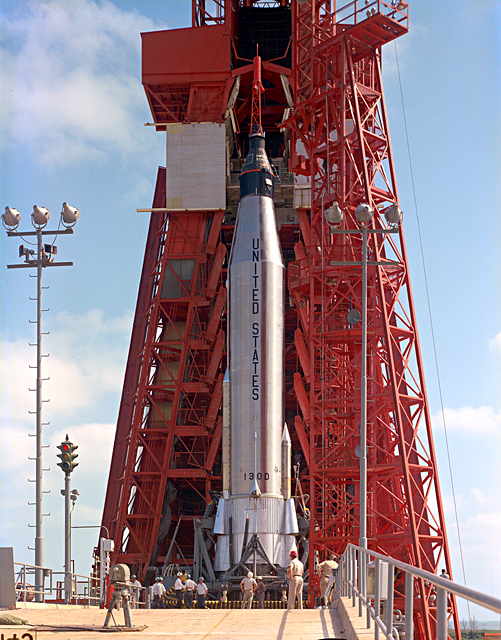

Ascent was described by the astronaut as a smooth but definite push off the pad. A minute into the flight, the silvery booster initiated its pitch program and Cooper felt the vibrations of peak aerodynamic turbulence, known as “Max Q”, after which the ride smoothed out significantly and he heard a loud clang and the sharp, crisp thud of staging as the Atlas’ first-stage boosters cut off and separated.
In a curtain-call for the human-carrying Atlas that was as perfect as it could be, Cooper was delivered into orbit on a heading just 0.0002 degrees from accurate. Radioed an admiring Wally Schirra from Mission Control: “Smack-dab in the middle of the plot!”
With Deke Slayton having missed out on his chance to ride an Atlas-D, another who wanted a chance to ride the temperamental rocket was America’s first man in space, Al Shepard. Tests in February 1963 suggested that a Mercury capsule could theoretically endure a mission of three or even four days in space and Shepard, believing such a hypothetical flight to be his, even went so far as to name “his” mission “Freedom 7-II”, honoring his original Redstone-launched spacecraft.
Had Shepard indeed flown an Atlas-D, it likely would have occurred no sooner than October 1963 and certainly the astronaut lobbied President Kennedy to this effect. However, the president rightly deferred a final decision to NASA Administrator Jim Webb, who desired instead to press on with the two-man Project Gemini.
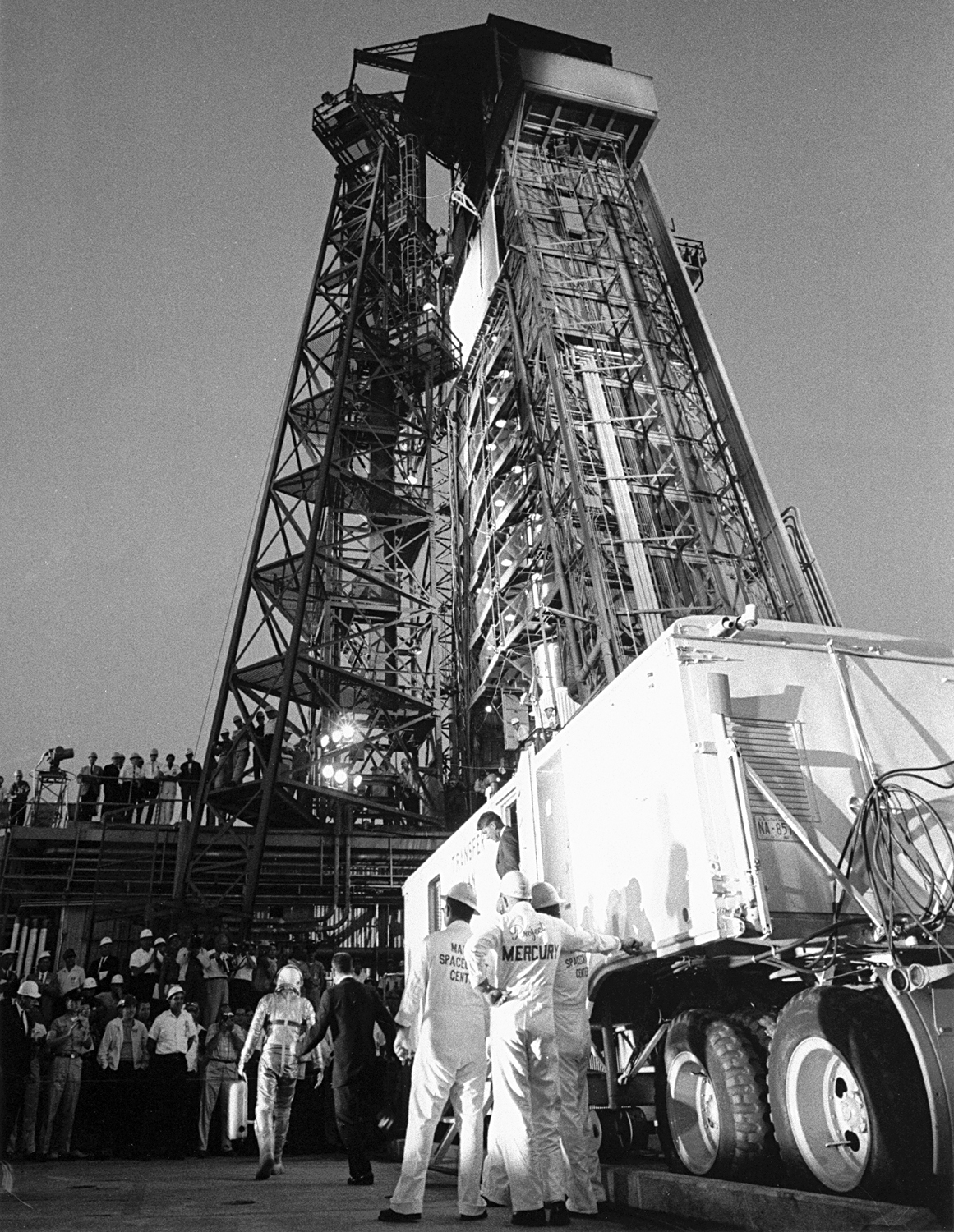

“After Cooper finished his day-and-a-half orbital mission, there was another spacecraft ready to go,” Shepard recalled in a February 1998 NASA oral history interview. “My thought was to put me up there and just let me stay until something ran out—until the batteries ran down, until the oxygen ran out or until we lost a control or something. Just an open-ended kind of a mission.”
Sadly, it was not to be. Days before Cooper’s launch, NASA emphatically stated that another Mercury-Atlas mission would not occur, with Webb disinterested in a long-duration flight using an obsolete system when Project Gemini was already better engineered for that task. With Faith 7, the final human had ridden a Mighty Atlas and though the fleet would go through multiple incarnations over the years and achieve a remarkable success rate it would remain an uncrewed launch vehicle for the next six decades.
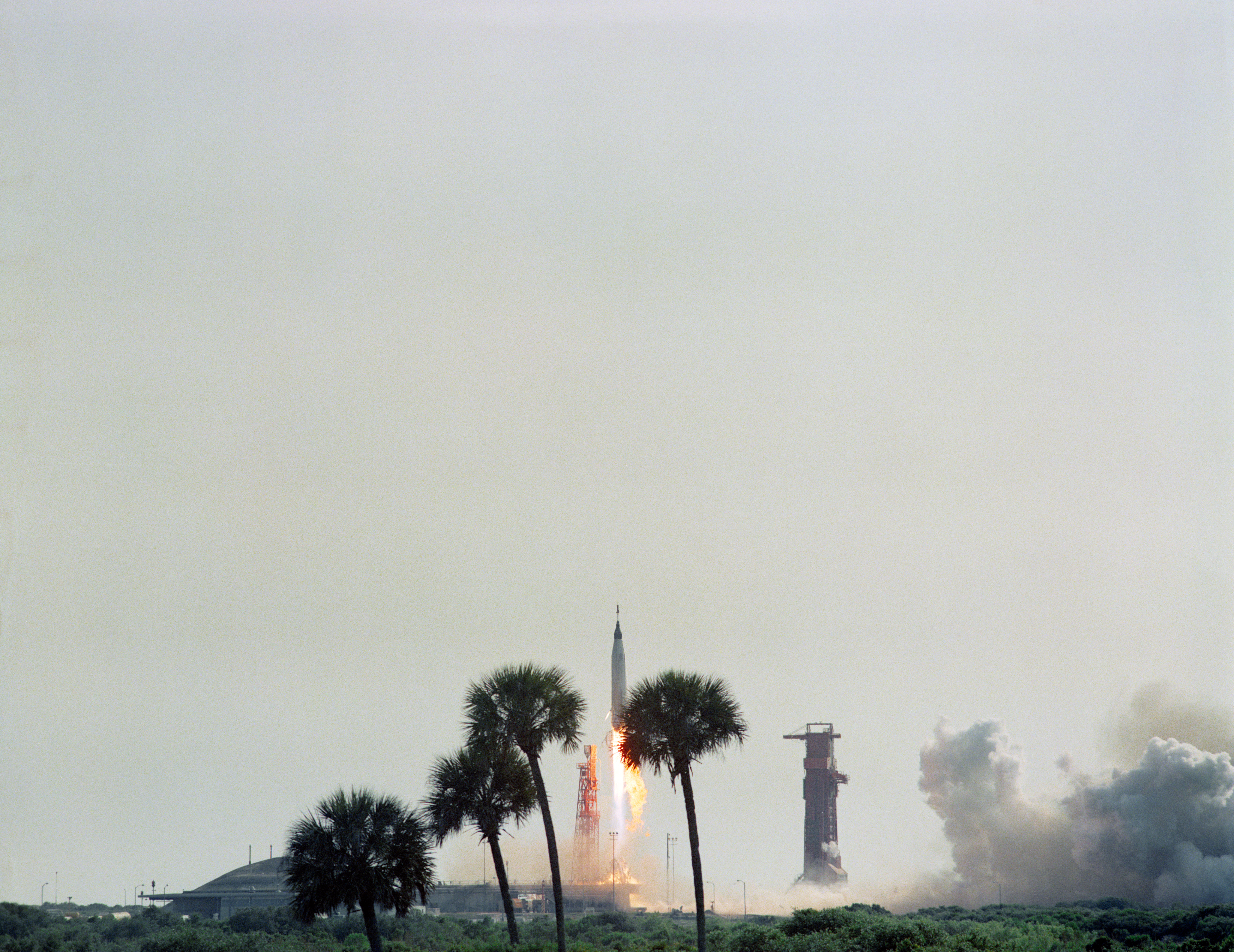

Indeed, Mighty Atlas was the single pivotal factor which enabled America’s first faltering steps into orbital flight with humans. One day in 1959, Project Mercury astronaut Virgil “Gus” Grissom visited Convair Corp.—prime contractor of the Atlas—in San Diego and had the opportunity to address the workforce.
Astronauts and managers alike knew “Gruff Gus” rarely spoke unless he had something to say and even then his words were as short as possible. But on this occasion, his words proved nothing shy of inspirational.
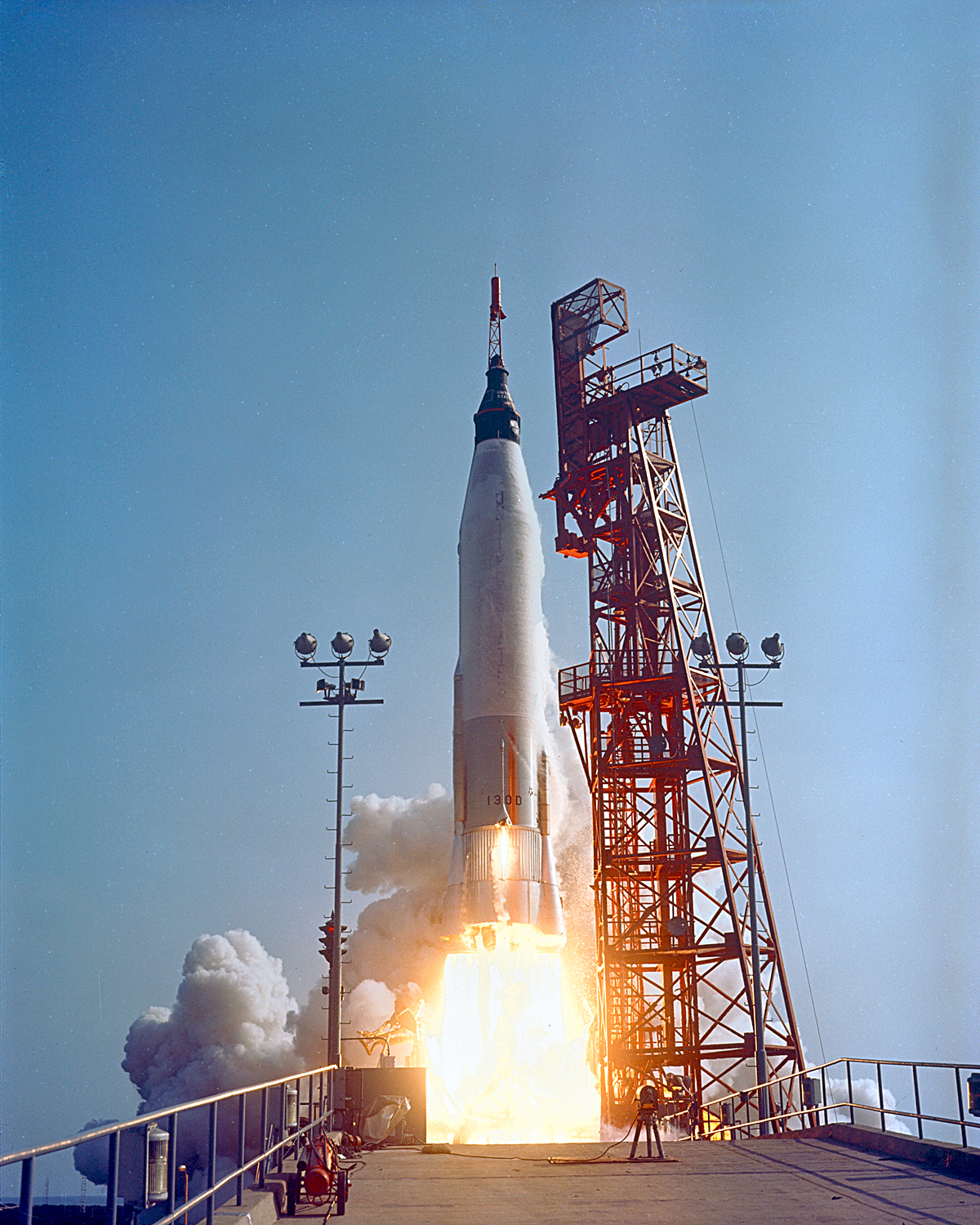

“Do good work,” Grissom told them, little realizing that those three simple words would become the workforce’s motto through Project Mercury.
And as the Mighty Atlas readies for its next generation of crew-carrying responsibility, that legacy of good work continues.
FOLLOW AmericaSpace on Facebook and X!


